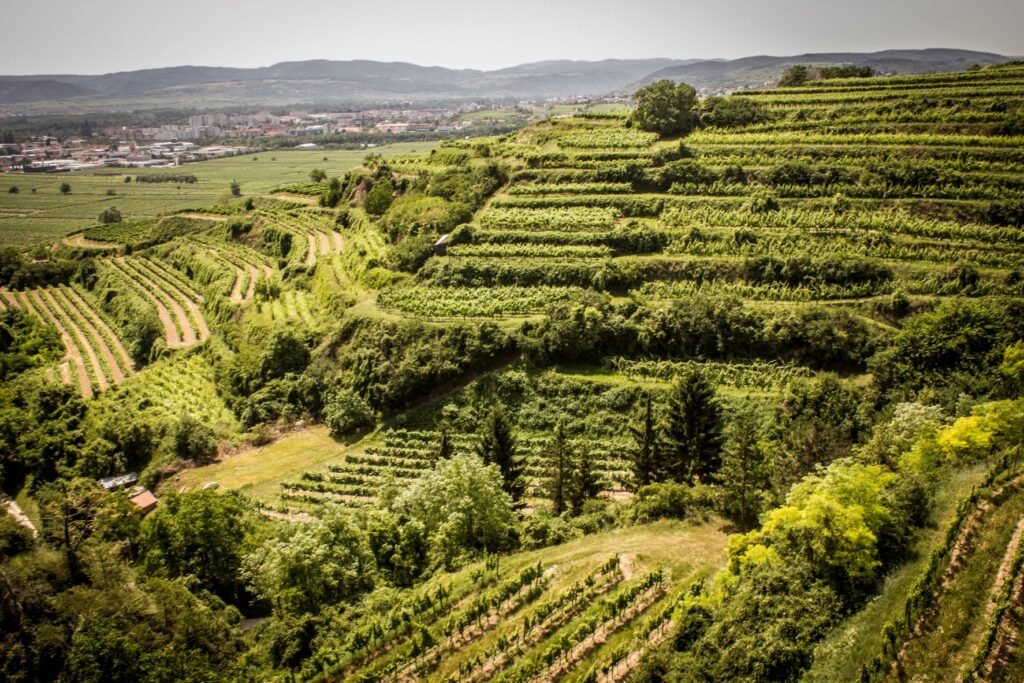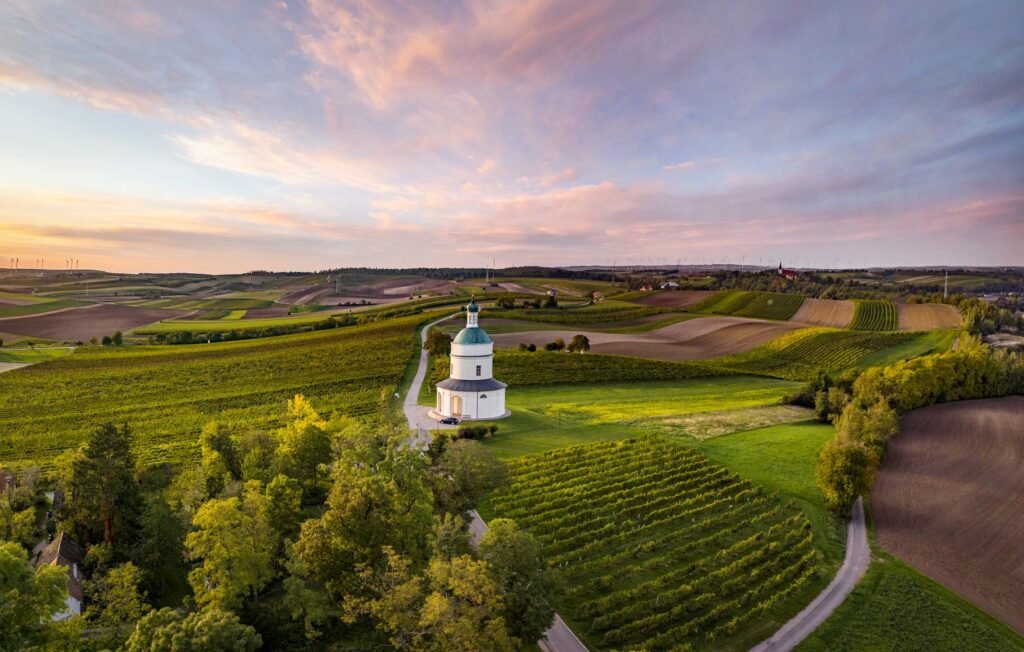
Увага! На сайті використовуються cookie файли.
The site uses cookie files
Даний сайт має вікове обмеження.
This site has age restrictions!
Я підтверджую, що мені, на жаль, давно виповнилося 18 років
Niederösterreich is Austria’s largest Qualitätswein wine-growing region. This region is associated with a wealth of different origins and wine styles produced from unique domestic grapes, as well as international varieties.
Niederösterreich is home to eight specific Qualitätswein wine-growing regions, ranging from Wachau in the west to Carnuntum in the east. It can be divided into three rough climate zones: the Weinviertel in the north, the Danube region and its tributary valleys to the west of Vienna, and Niederösterreich, with its Pannonian climate, in the south-east.

Vineyards Kremstal
The vast Weinviertel made headlines in 2003, when it was the first wine-growing region in Austria to decide to exclusively use the name of the region to market its most regionally typical wine, namely its flagship, peppery Grüner Veltliner. Since then, the designation Weinviertel DAC on a label guarantees that the wine held within is an aromatic, peppery and refreshing Grüner Veltliner. Since the 2009 vintage, powerful Reserve wines have also been released under this designation. The diverse range of varietals from the Weinviertel includes refreshing white wines, fruity reds and even a selection of sweet wines, which are labelled with Niederösterreich as their designation of origin.

Vineyards Wachau
A number of delightful wine villages are threaded along the Danube from Melk to Klosterneuburg, and along the Krems, Traisen and Kamp tributaries like a string of pearls. Here, Riesling has established itself as a flagship variety alongside Grüner Veltliner. These two varieties express their typical regional characteristics under the designations Wachau DAC, Kremstal DAC, Kamptal DAC, Traisental DAC and Wagram DAC.

Vineyards Carnuntum
The steep crystalline hillsides of the Wachau valley transition into loess terraces in the eastern part of the neighbouring Kremstal, which also influence the character of the wines to a certain extent in the Traisental and Kamptal – . However, this influence is especially seen in Wagram, where Roter Veltliner has become preeminent alongside Grüner Veltliner. In the Kamptal, especially on the Heiligenstein mountain, the conglomerate and non-calcareous soils give the wines their distinctive character. Specialities such as Pinot Blanc and Chardonnay in this part of Niederösterreich – alongside elegant red wines – round out the region’s colourful offering.

Vineyards Weinviertel
Influenced by the Pannonian climate, Niederösterreich – to the south and east of Vienna – is home to some of Austria’s most outstanding red wines, with Zweigelt and Blaufränkisch in Carnuntum forming the basis for this region’s distinctive DAC wines. Regionally typical white wines are produced here too, centred on Chardonnay, Pinot Blanc and Grüner Veltliner. In the Thermenregion, Pinot Noir and Sankt Laurent set the tone for the area’s red wines. The white varieties Zierfandler and Rotgipfler are unique indigenous varieties that are almost exclusively found in this area. Niederösterreich is a vast region, whose wines are as diverse as they are outstanding.

Vineyards Kamptal
Niederösterreich includes the following geological units: the Moldanubian zone, the Moravian zone, the Molasse zone and Vienna Basin, the Waschberg zone, the Flysch zone, the Northern Calcareous Alps and the Central Eastern Alps. All the major geological units are covered with deposits from the Quaternary, such as powdery loess and coarse-grained terrace gravel, which have a significant influence on wine-growing, Loess is the parent material in over half of the vineyards in this region, providing a good rooting depth and a soil containing varying proportions of lime and dolomite. Almost one third of the region’s vineyards grow on deposits from the Neogene period within the Molasse zone and Vienna Basin. Apart from the conglomerate, Leitha limestone, marl and sandstone that have formed in some places, the dominant rocks here are all unconsolidated. They contain every possible combination of clayey silt, sand, gravel and coarse gravel in various proportions, and can also differ greatly in terms of their carbonate content.
Just over 6% of the vineyards here are located on soils that overlay hard crystalline rock from the Bohemian Massif. These areas are dominated by acidic gneiss, granite and granulite. Especially in the area marked by an abundance of foliated paragneiss, layers of amphibolite are common, as well as the occasional layer of marble. A feature worthy of particular mention are the remnants of the mountain range’s first cycle of erosion, which are preserved in the Zöbing formation from the late Palaeozoic.
Explore Austrian through Austrianvineyards.com
Фото: © Austrian Wine
09.09.2024
08.06.2022
07.06.2022